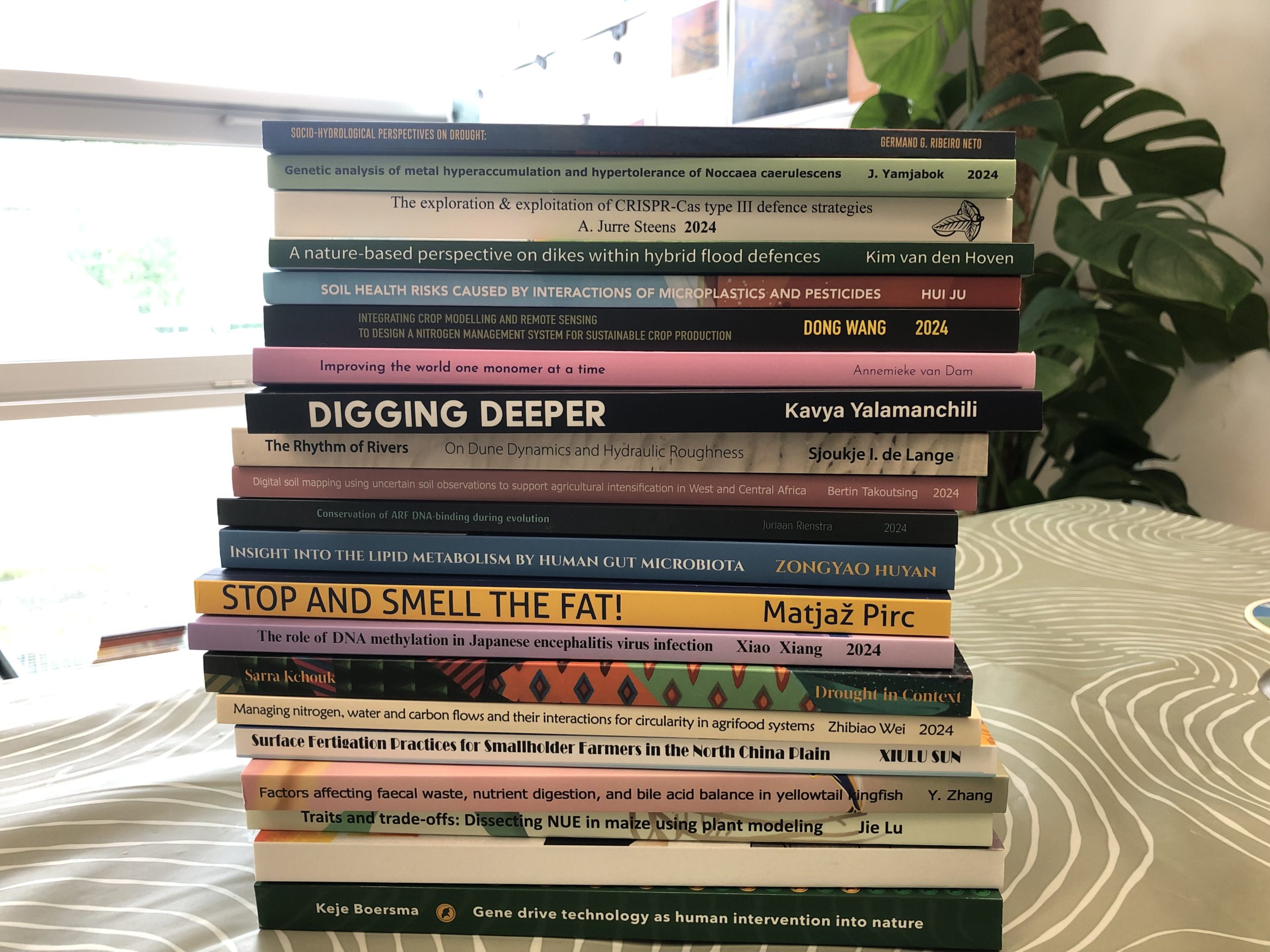More than 250 PhD students receive their PhDs at WUR every year. It is impossible to describe and summarize all these theses. In the column ‘PhD theses in a nutshell’ the selection of our science editors is briefly presented.
Nasty taste
Food products that have started to rot will usually have a nasty taste. That is caused partly by oxidation of fats. Epoxides (a type of cyclic ether) are an important product of oxidation. Vincent Boerkamp developed a method based on NMR (nuclear magnetic resonance) to identify these and other oxidation products in oils and emulsions. He figured out the network of reactions. A model based on this predicts what reactions you can expect in any given oil. That is handy if you want to avoid those nasty tastes by adding the right antioxidants. RK
NMR-based mapping of lipid oxidation routes in foods.
Vincent Boerkamp. Supervisors Jean-Paul Vincken and John van Duynhoven
Measuring cows
Farmers who want to monitor the growth of individual cows could just put them regularly on a set of scales. But there are faster methods. A good alternative is a drone with LIDAR (radar but with laser light), concludes Yaowu Wang. LIDAR lets you construct 3D images of cows that are so good you can use them to accurately determine the cow’s dimensions and weight. What is more, you can recognize the individual cow based on the pattern of its coat. The model developed by Wang has uses beyond monitoring cows too. In principle, it is applicable to wild animals as well such as zebras or yaks. RK
Integrating UAV-based LIDAR and 3D computer vision to enhance cattle growth monitoring in precision livestock farming.
Yaowu Wang. Supervisors Lammert Kooistra and Wensheng Wang (China)
Wake-up call
How does the dormant axillary bud of a tomato plant know it’s time to make a side branch? A lot is involved, discovered Gül Hatinoğlu (from Turkey). A mysterious network of signals is behind this, with a central role for the transcription factor BRC1, which acts as a brake. Once the brake is removed, the bud can wake up. But how and where the brake inhibits the DNA is much more complicated than that, as Hatinoğlu’s research shows. The wake-up call for a budding tomato is far from simple.
Awakening buds. Gül Hatinoğlu.
Supervisor Richard Immink



